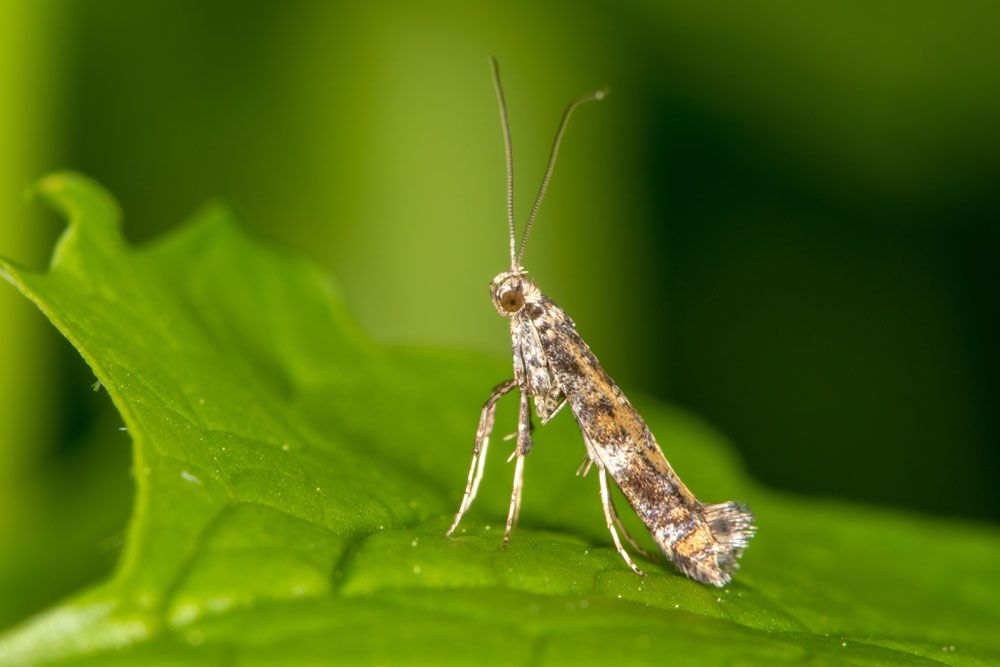
Lilac Leafminer – Caloptilia syringalla
Lilac Leaf Miner: Appearance, Territory, Damage and Life Cycle
Latin Name: Caloptilia Syringella
Appearance: The lilac leafminer, sometimes known as the privet leafminer, is a moth in the Gracillariidae family. It may be found across Europe. It has made its debut in North America. The wingspan is 10–13 mm. The forewings are light yellow brownish, with whitish and dark fuscous strigulate towards the base. Hindwings have a dark grey color. The larva is white, occasionally greenish-tinged, with a deeper green dorsal line and a brownish-tinged head.
Hosts Plants: The lilac leaf miner is a little brown moth larva that feeds on lilac and privet.
Territory: Europe and North America
Damage Insect Cause: Early in the summer, light green spots form on the leaves; the blotches turn brown and are typically wrinkled. The leaf tips are coiled and linked together with silky webbing later on. The tops of the coiled leaves look to be devoured. A little green worm may be seen inside a splotch if it is pulled open. A thin white cocoon or a pale-yellow worm up to 1/3 inch long may be found in the folded leaf tips. If the infestation is severe, use an insecticide indicated for this pest and apply it according to the label guidelines. Pick off and destroy both mined and curled leaves before the larvae descend to the ground to pupate if the infestation is light. This species’ larvae are difficult to kill since they eat between the upper and lower surfaces of the leaves, where they are safe from normal touch and stomach pesticides. A licensed systemic pesticide (one that is taken into the plant and makes it harmful to insects when consumed) is effective.
Life History and Habits: The lilac leafminer spends the winter as a pupa or fully formed larva among mines of fallen leaves. Adult moths appear in the spring after the leaves have emerged and deposit their eggs in tiny clusters on the foliage. From beneath the egg, newly born larvae tunnel right into the leaf. They construct a blotch-type mine as they mature and get larger, and tunneling by many larvae may converge. When the larvae are nearly adult, they leave the leaf mine and bind the leaf’s edge with silk. They eat within the folded leaf and pupate afterwards. Each season, there are most likely two generations.
